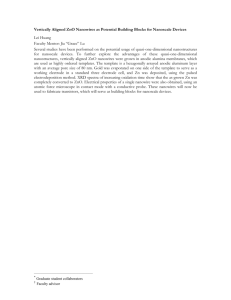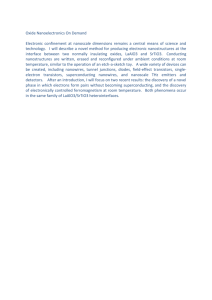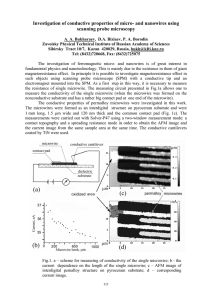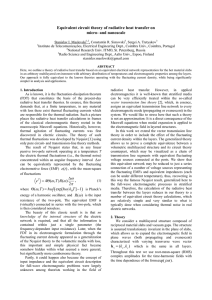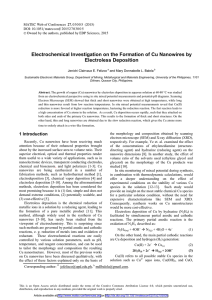Nanomaterials in One Dimension: Exploring... Grown Nanowires
advertisement
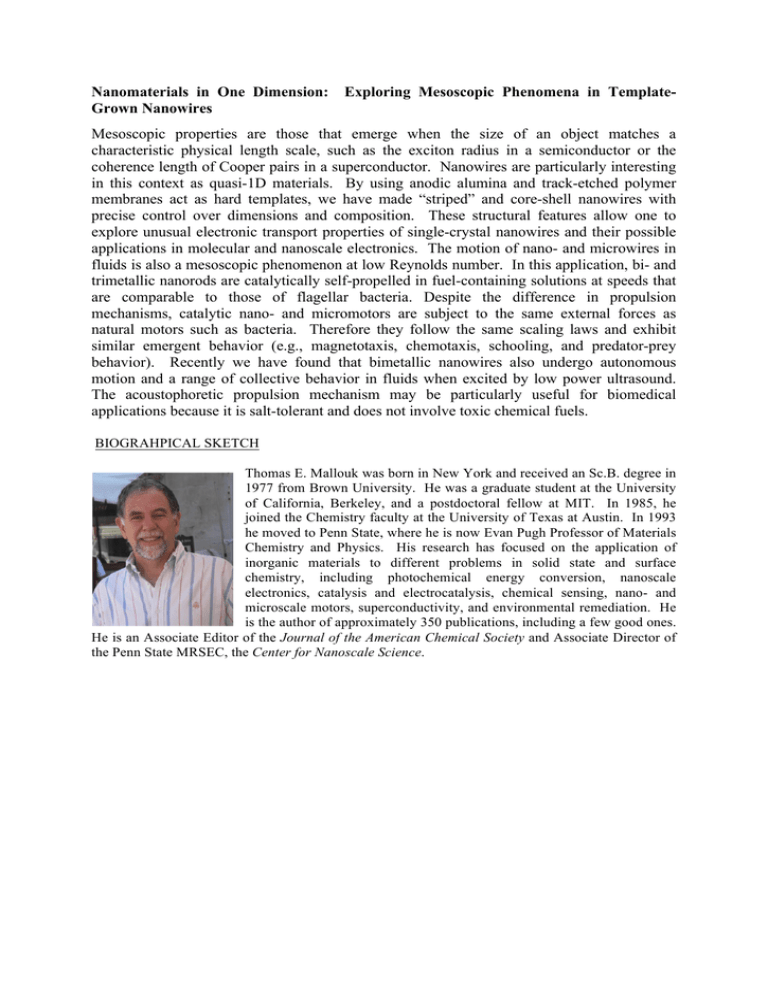
Nanomaterials in One Dimension: Grown Nanowires Exploring Mesoscopic Phenomena in Template- Mesoscopic properties are those that emerge when the size of an object matches a characteristic physical length scale, such as the exciton radius in a semiconductor or the coherence length of Cooper pairs in a superconductor. Nanowires are particularly interesting in this context as quasi-1D materials. By using anodic alumina and track-etched polymer membranes act as hard templates, we have made “striped” and core-shell nanowires with precise control over dimensions and composition. These structural features allow one to explore unusual electronic transport properties of single-crystal nanowires and their possible applications in molecular and nanoscale electronics. The motion of nano- and microwires in fluids is also a mesoscopic phenomenon at low Reynolds number. In this application, bi- and trimetallic nanorods are catalytically self-propelled in fuel-containing solutions at speeds that are comparable to those of flagellar bacteria. Despite the difference in propulsion mechanisms, catalytic nano- and micromotors are subject to the same external forces as natural motors such as bacteria. Therefore they follow the same scaling laws and exhibit similar emergent behavior (e.g., magnetotaxis, chemotaxis, schooling, and predator-prey behavior). Recently we have found that bimetallic nanowires also undergo autonomous motion and a range of collective behavior in fluids when excited by low power ultrasound. The acoustophoretic propulsion mechanism may be particularly useful for biomedical applications because it is salt-tolerant and does not involve toxic chemical fuels. BIOGRAHPICAL SKETCH Thomas E. Mallouk was born in New York and received an Sc.B. degree in 1977 from Brown University. He was a graduate student at the University of California, Berkeley, and a postdoctoral fellow at MIT. In 1985, he joined the Chemistry faculty at the University of Texas at Austin. In 1993 he moved to Penn State, where he is now Evan Pugh Professor of Materials Chemistry and Physics. His research has focused on the application of inorganic materials to different problems in solid state and surface chemistry, including photochemical energy conversion, nanoscale electronics, catalysis and electrocatalysis, chemical sensing, nano- and microscale motors, superconductivity, and environmental remediation. He is the author of approximately 350 publications, including a few good ones. He is an Associate Editor of the Journal of the American Chemical Society and Associate Director of the Penn State MRSEC, the Center for Nanoscale Science.

